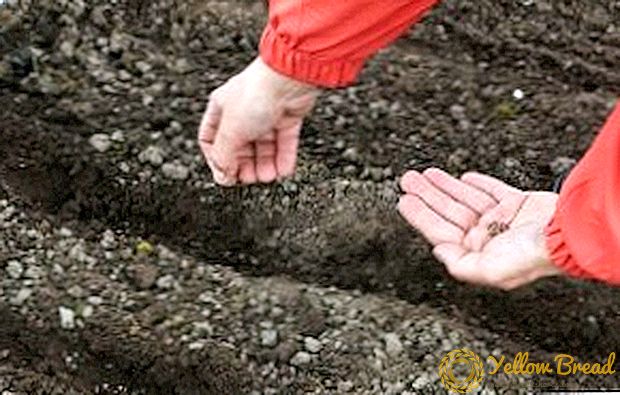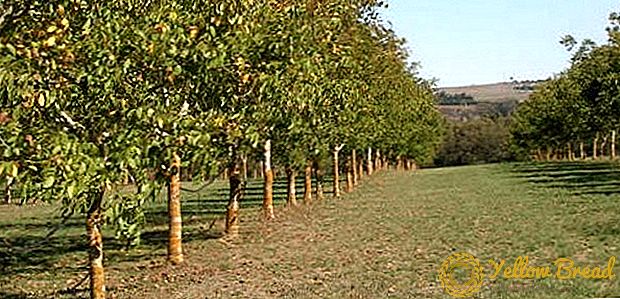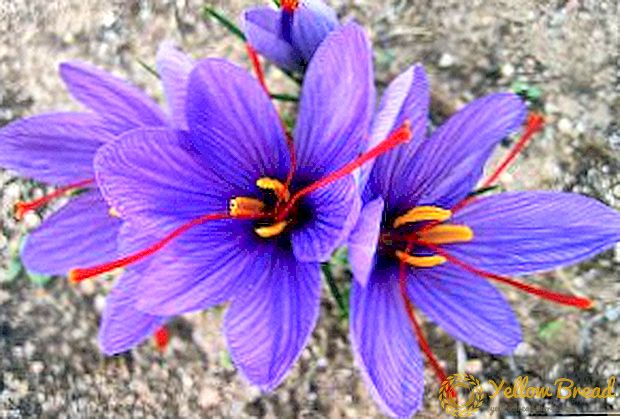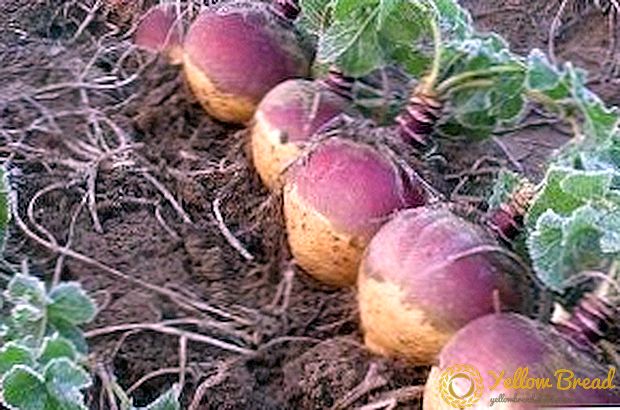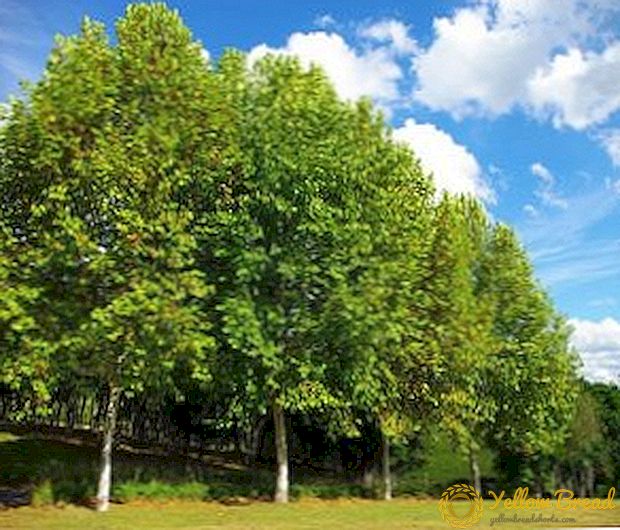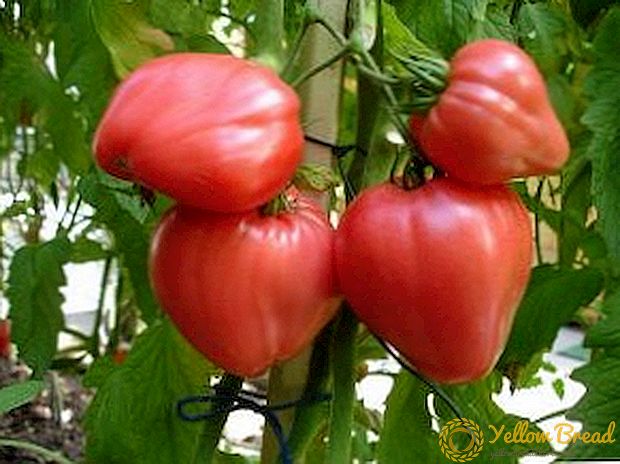 Appearance grape "Romeo" very beautiful. The clusters are regular, large, as if they were painted. And the taste is amazing.
Appearance grape "Romeo" very beautiful. The clusters are regular, large, as if they were painted. And the taste is amazing.
In our article we consider the description of this variety, as well as the characteristics of cultivation.
- Breeding history
- Description of the variety
- Bushes
- Bunches
- Characteristic grapes
- Yield
- Gestation period
- Winter hardiness
- Disease and Pest Resistance
- Planting seedlings
- Peculiarities of care
Breeding history
This type of grape was developed by the Russian breeder E. G. Pavlovsky. He crossed the varieties of grapes "Demeter" and "Nistru". "Romeo" is a young variety, and its popularity is not too big. But we can say that soon, “Romeo” will become a frequent decoration of the garden and a favorite delicacy.

Description of the variety
Consider the description of the grape variety "Romeo". This is a table hybrid sub-species, ripening by the end of summer or early autumn.
Bushes
Grape bushes "Romeo" vigorous. Mature shoots become light brown with a green tint, with the nodes of dark brick color. The leaves are dark green, round shape with an average degree of dissection. The inflorescences of grapes are bisexual. The ovary has a large size, good density and light green color.
Bunches
This variety has large brushes. Their shape is like a cone. The weight of a mature bunch can be about 1 kg. Looseness is average. 
Ripe berries are large, weighing 10-12 g. They are elongated with pointed ends. Fruits are dark purple, have a peel of medium density. The flesh of the berries is slimy, its consistency and taste resembles marmalade. There are 2-3 bones in each fruit. Sugar in them is not much.
Characteristic grapes
The variety is very young, so many of its characteristics have not yet been confirmed. But according to preliminary data, this grade tolerates frosts. Also noted and resistance to major diseases of the vine.

Yield
The variety is very prolific has good yields. Quite large berries form a large conical bunch weighing from 500 to 800 g. The taste of the berries is not particularly sophisticated, but you cannot call it primitive either.
Gestation period
This grape is mid-season - the first fruits reach maturity at the end of summer, by mid-September the entire crop is ready for harvest.
Winter hardiness
Winter hardiness is high - the grade can maintain up to -23 ° C. 
Disease and Pest Resistance
This variety is rarely affected by pests, powdery mildew, gray rot, so they say that it has good resistance. The resistance of phylloxera is under study.
Planting seedlings
When buying seedlings, you need to pay attention to their appearance. The roots of the plant must be well developed and healthy.

Landing scheme:
- Pits for planting seedlings should have a length, width and depth of 80 cm.
- Winegrowers advised to divide the excavated land into 2 parts. One is mixed with humus, superphosphate, potassium salt, and then fall asleep in the pit, well tamped.
- The root of the planting material is placed in it and covered with the rest of the earth, compacting it well.
- Around each bush leave a hole with a recess with a diameter of 50 cm.
- All seedlings must be watered - 25 liters of water per 1 square meter.
- After the ground absorbs water, it should be loosened, and the hole - to mulch.

Peculiarities of care
Consider How to care for grapes:
- Watering. Over-wetting grapes leads to poor yields. Therefore, it is first watered in the spring, when the air temperature rises above 0 ° C. The next time the bushes are watered after pruning the vine. Next, moisten the plants before and after flowering. Preparing for the winter period also includes abundant watering - 50 liters of water per 1 square meter.
- Crop. This event is held in March, before the beginning of the growing season. On one bush should be 35 eyes - this is the correct load.
- Top dressing. In March, the soil is fertilized with ammonium nitrate. Before the flowering of the grapes and after it, additional feeding with the use of superphosphate and potassium salt is also required.During irrigation, bushes can be fertilized with humus, compost, peat.
- Pests and diseases. Romeo is resistant to diseases. But if the leaves appear yellow spots or gray patina, you need to treat the plants Bordeaux liquid since it could be phylloxera. Wasps and birds love to eat grapes, so it is recommended to protect all the bushes, using a special grid.
- Weeding. This event is held to get rid of weeds. It is recommended to do this as necessary.
- Preparing for the winter. This variety is frost resistant. But the grapes still need to prepare for the cold, wrapping every bush. You can use the dry option and falling asleep shoots ground. For young grapes, it is better to use a sprinkling of soil: you need to dig a trench 20 cm deep, cover the bottom with straw or fallen leaves, and then put the vine there and cover with straw. For the dry method of covering used film and agrofibre or tarpaulin. The branches are placed on the mulch under the bushes, covered with hay and the film is placed on top, which is fixed with steel straps.

